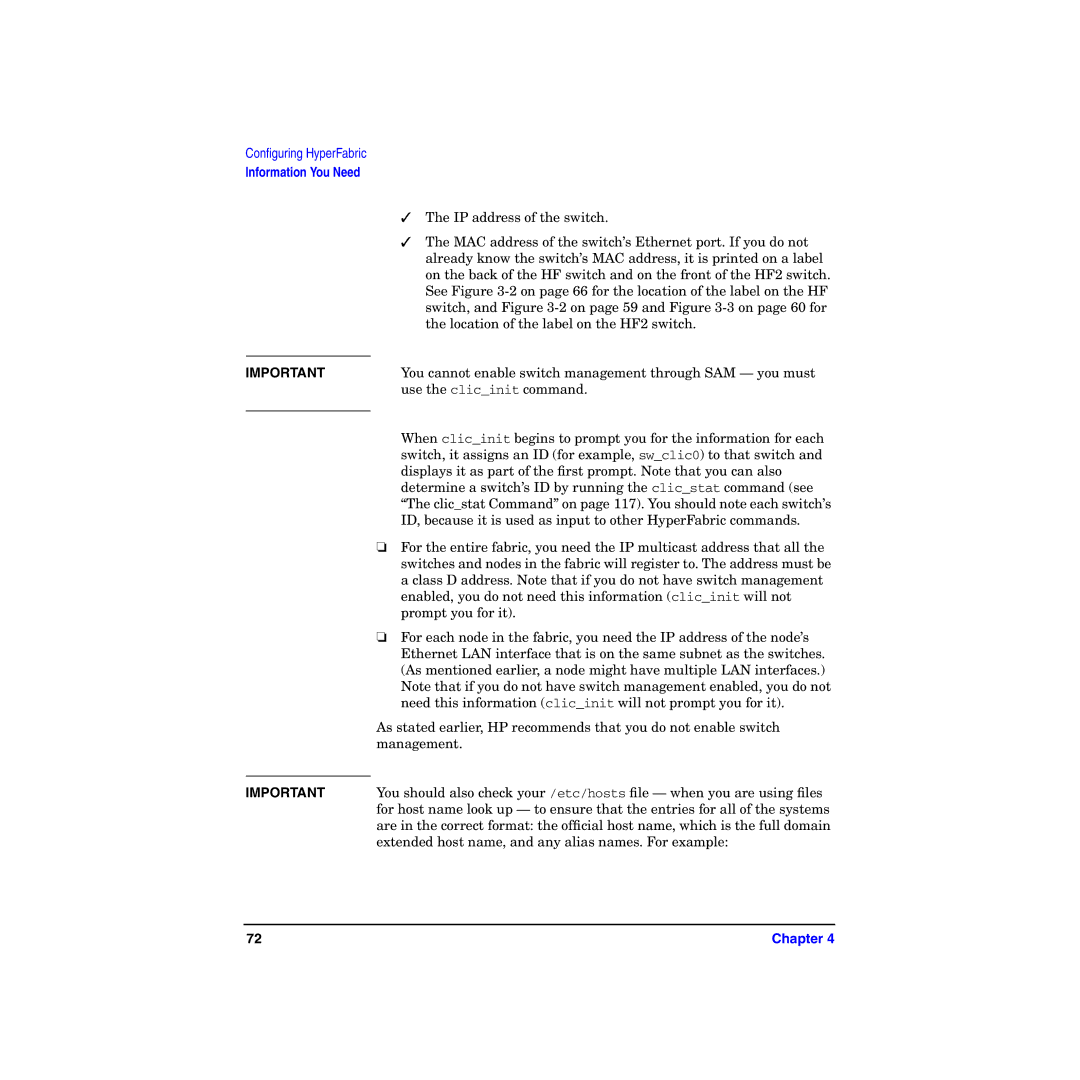
Configuring HyperFabric
Information You Need
✓The IP address of the switch.
IMPORTANT
IMPORTANT
✓The MAC address of the switch’s Ethernet port. If you do not already know the switch’s MAC address, it is printed on a label on the back of the HF switch and on the front of the HF2 switch. See Figure
You cannot enable switch management through SAM — you must use the clic_init command.
When clic_init begins to prompt you for the information for each switch, it assigns an ID (for example, sw_clic0) to that switch and displays it as part of the first prompt. Note that you can also determine a switch’s ID by running the clic_stat command (see “The clic_stat Command” on page 117). You should note each switch’s ID, because it is used as input to other HyperFabric commands.
❏For the entire fabric, you need the IP multicast address that all the switches and nodes in the fabric will register to. The address must be a class D address. Note that if you do not have switch management enabled, you do not need this information (clic_init will not prompt you for it).
❏For each node in the fabric, you need the IP address of the node’s Ethernet LAN interface that is on the same subnet as the switches. (As mentioned earlier, a node might have multiple LAN interfaces.) Note that if you do not have switch management enabled, you do not need this information (clic_init will not prompt you for it).
As stated earlier, HP recommends that you do not enable switch management.
You should also check your /etc/hosts file — when you are using files for host name look up — to ensure that the entries for all of the systems are in the correct format: the official host name, which is the full domain extended host name, and any alias names. For example:
72 | Chapter 4 |
